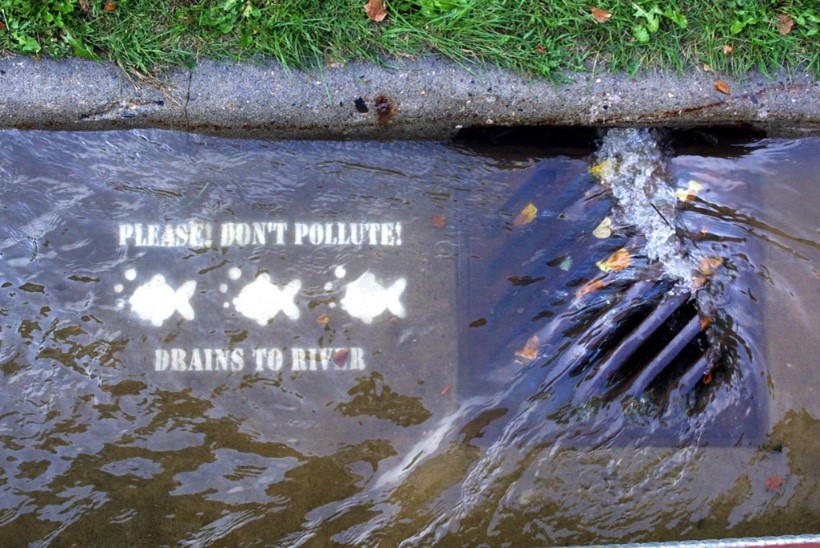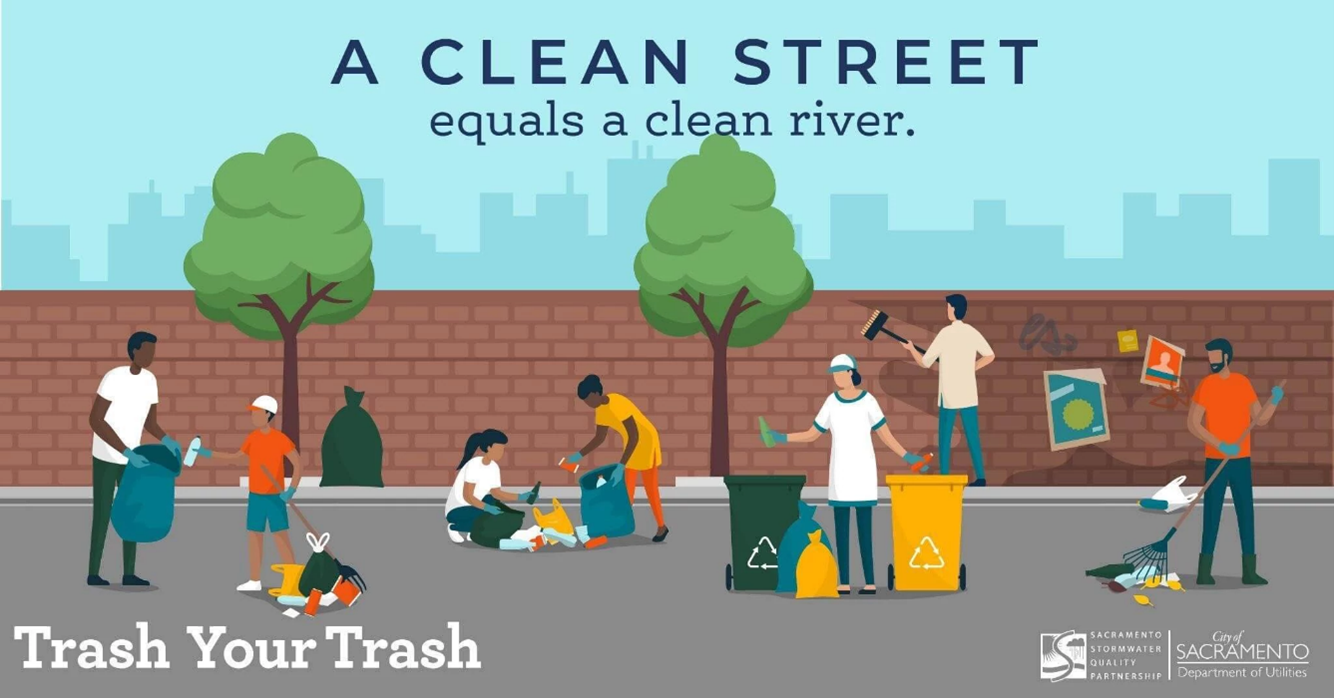Planning effectively for climate change involves taking steps to improve the resiliency of your system's water supplies. Even areas not impacted by droughts face changing weather patterns and more severe storms that threaten the quality of drinking water supplies. As these water supplies are increasingly stressed by population growth and contamination, it becomes more crucial to treat stormwater as a resource. Protecting stormwater quality not only prevents contamination of drinking water supplies but acts as an additional source improving their resiliency.
While there are many elegant approaches such as incorporating green infrastructure, there can be significant barriers to these approaches, especially for smaller systems. Another, often more accessible, approach is public education. Asking community members to participate in protecting stormwater quality can garner extensive benefits for much less cost and effort than siting and installing infrastructure.
Stormwater contacts a number of common stormwater pollutants (e.g., detergents, pet waste, and fertilizers) from actions that people likely would avoid if they knew of the consequences. Encouraging the public to adopt habits that prevent pollution of stormwater runoff not only prevents environmental damage, but vastly improves the resiliency of drinking water supplies and saves on treatment costs. For many communities, stormwater public education is a low hanging fruit in establishing a more wholistic approach to water conservation.
This is a lot of terms for operators to keep straight. The best way to understand and remember them is to see how the nitrification and denitrification processes work. This involves some basic chemistry.
Nitrification is a 2-step aerobic process. It is carried out by 2 different bacterial species. First, ammonia (NH3) is converted to nitrite (No2–) by ammonia-oxidizing bacteria (AOB). Then nitrite (No2–) is converted to nitrate (NO3–) by nitrite-oxidizing bacteria (NOB). Both of these reactions require oxygen (O2). A simplified chemical reaction for this step looks like:
What does stormwater public education look like?
The primary goals of stormwater public education and outreach campaigns are to educate the public on the impact of stormwater pollution and encourage behavioral changes that help prevent pollution of runoff. Many adapt best management practices (BMPs) to community initiatives. Common BMPs included in stormwater public education are:

- Preventing littering
- Properly disposing of trash and recyclables
- Properly disposing of pet waste
- Safely applying or avoiding lawn chemicals and fertilizers
- Avoiding washing cars on a paved surface and using detergents
- Properly changing and recycling motor oil
- Properly disposing of household chemicals (such as paint and cleaning supplies)
Outreach should emphasize the practices that most directly affect your community's pressing water quality issues. For example, if local water bodies are experiencing algal blooms and eutrophication, then focus the messaging on BMPs that reduce nutrient pollution, such as limiting fertilizer use and proper pet waste disposal.
Effective delivery of an effective message
Effective stormwater outreach is specific to each community, focusing on the impacts to local drinking water supplies and ecosystems. The message not only needs to be developed but delivered in a manner that encourages the audience to adopt the BMPs suggested. There is no single outreach strategy that will be universally received. People change their behaviors for a variety of reasons. Deciding how best to appeal to the audience influences the success of any education and outreach campaign. Outreach surrounding stormwater commonly appeals to the following:
- Protecting public health
- Preventing harm to the environment and wildlife
- Saving taxpayers money by reducing water treatment costs
Defining your target audience will help inform the best approach. It's important to have a deep understanding of your community when deciding how best to package your message. The Merrimack Watershed Association, which has a detailed guide on developing a public education plan, found that environmental stewardship was the most universally received approach. Find out what appeals to your community and build your message on that. Using a variety of delivery methods including humor, shock value, and community pride will help reach a broad audience. Graphics and short slogans, like those used by the Sacramento Stormwater Quality Partnership, can be used to solidify the messaging.

Connecting with the community
Partnerships with local organizations can offer valuable assistance with both learning more about what appeals to the community and disseminating the messages. Organizations with a focus on water quality and other community-based groups can help identify specific water quality concerns the community is facing and shape the messaging based on their past experiences with other outreach efforts. Some ideas of local organizations to partner with are:
- Stormwater groups
- Watershed management groups
- Tribal organizations
- Schools and youth organizations
- Wildlife/environmental protection groups
- Community clean-ups or other service groups
Community involvement through stormwater public education is a crucial part of protecting drinking water supplies that may be more accessible to small water systems than infrastructure updates or other methods. Effective messaging can enlist community members in improving both stormwater quality and the resilience of the whole water system.
Back to menu